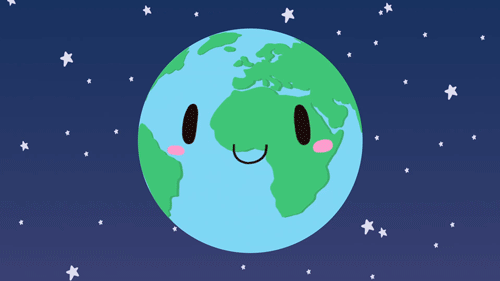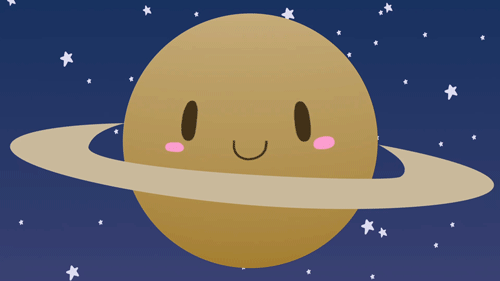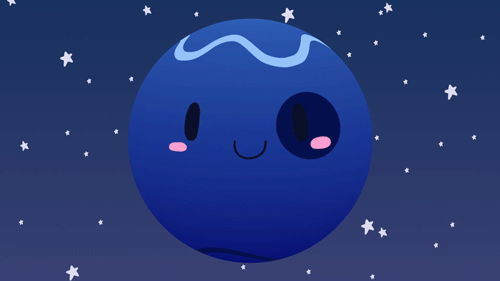Curate, connect, and discover
Uranus - Blog Posts

The artistic vibes hit hard today so I drew planets as people! This is Uranus on the right and Neptune on the left. Both of them have warm cloaks because of how far they are from the sun! For Uranus I was inspired by the Greek god he was named after, who was the king of the sky and clouds (so many clouds and sky blues in the design.) As for Neptune, we went off of the planets naturally beautiful texture, and I wanted to make her more of a fighter character so we kept that in mind when designing her. These were so fun! I think I want to do more. 😁🔱🪐☁️☁️🌧️
Hello! I saw that you made this post saying that in the first house the planet that it's in is more prominent than the rising sign. I have a libra rising, uranus in pisces in the first house what does that signify? ^^
Hello and this could signify that you give off Uranus vibes which is maybe eccentric, detached, unique, and intelligent your rising sign still has significance but the planet can take over for me I resonate more with jupiter than scorpio but that's me you can resonate more witg libra and it's interesting because libra is more conventional and Uranus isn't so maybe you have a mixture of conventional attractiveness and unconventional attractiveness you may look ethereal or "out of this world" or you can pull that look off

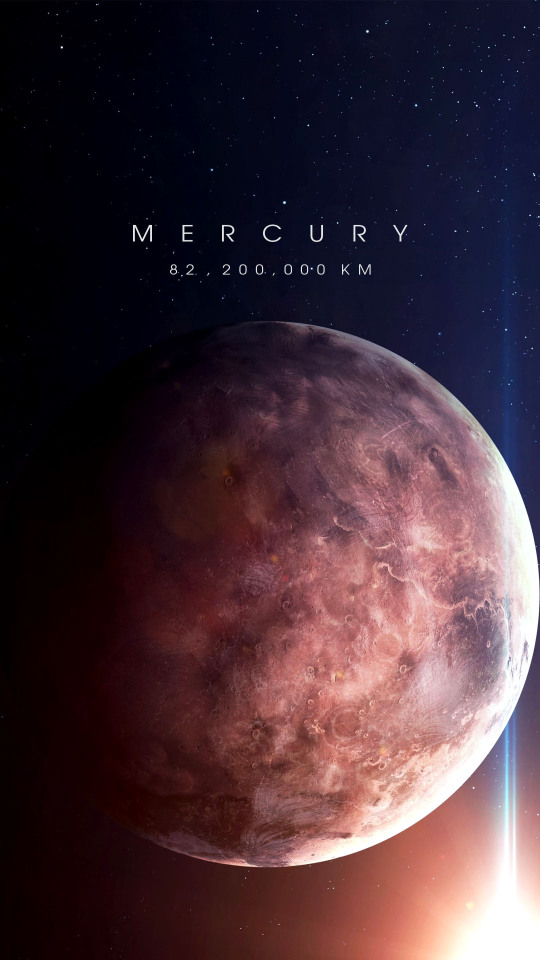



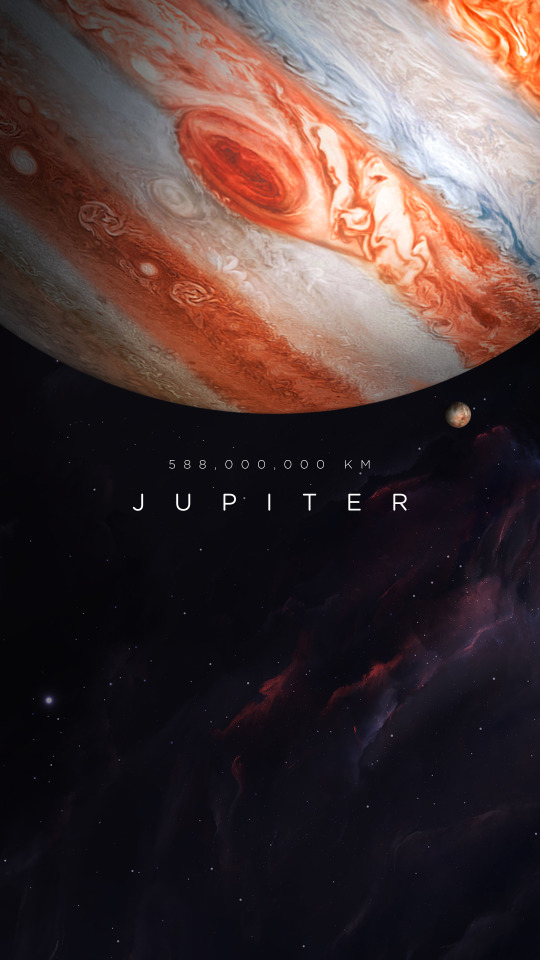
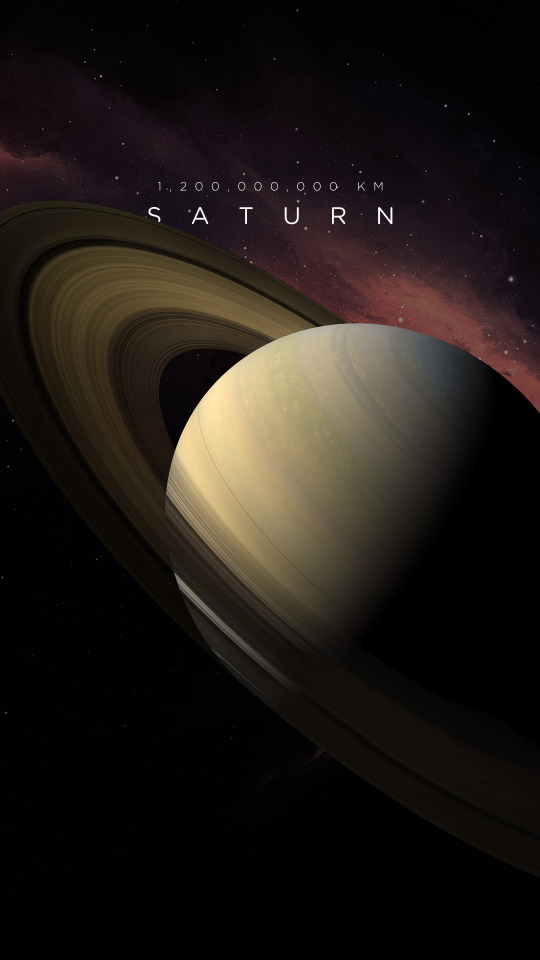
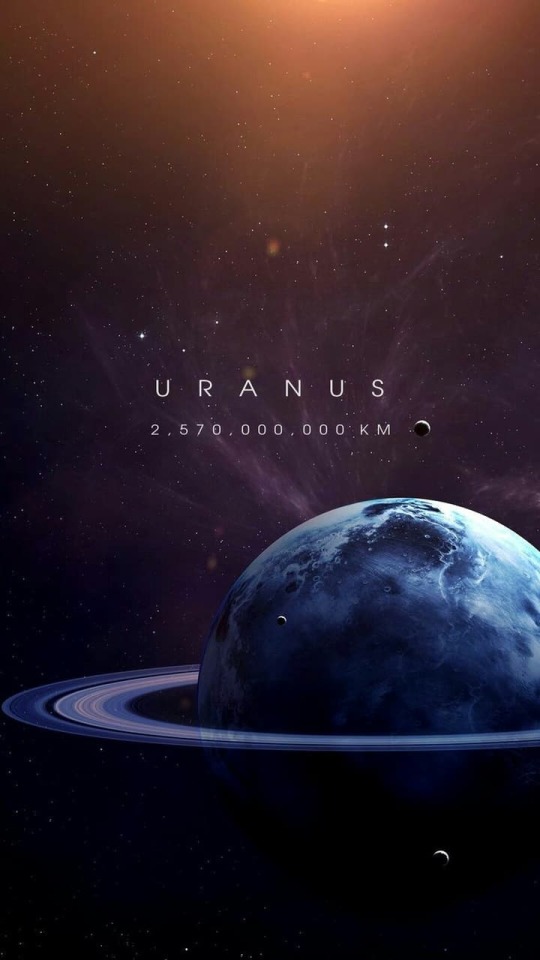

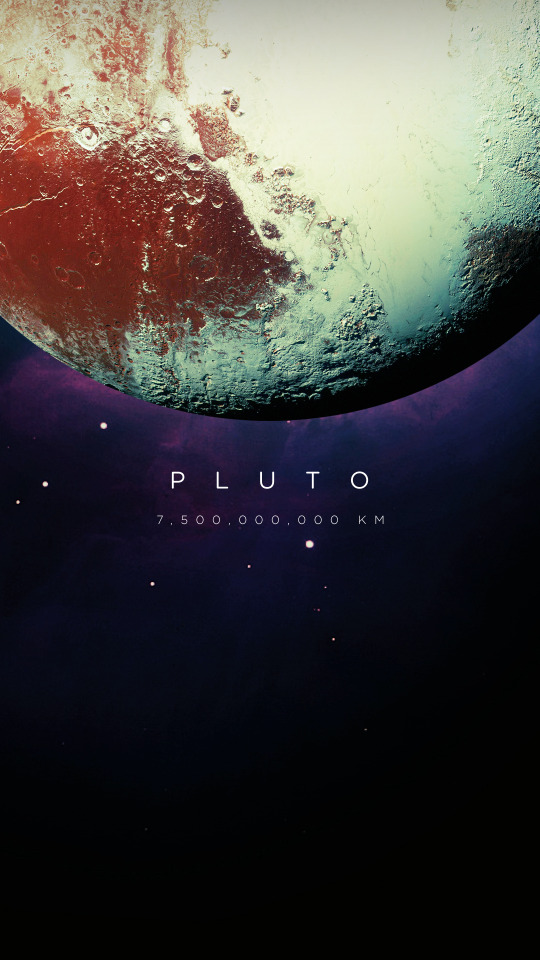
Our Amazing Solar System

#TBT to 1989 when Voyager 2 spotted Uranus looking like a seemingly perfect robin’s egg. 💙 When our Voyager 2 spacecraft flew by it in this image, one pole was pointing directly at the Sun. This means that no matter how much it spins, one half is completely in the sun at all times, and the other half is in total darkness.. Far-flung, Uranus – an ice giant of our solar system – is as mysterious as it is distant. Soon after its launch in 2021, our James Webb Space Telescope will change that by unlocking secrets of its atmosphere. Image Credit: NASA/JPL-Caltech
Make sure to follow us on Tumblr for your regular dose of space: http://nasa.tumblr.com
A Tour of Storms Across the Solar System

Earth is a dynamic and stormy planet with everything from brief, rumbling thunderstorms to enormous, raging hurricanes, which are some of the most powerful and destructive storms on our world. But other planets also have storm clouds, lightning — even rain, of sorts. Let’s take a tour of some of the unusual storms in our solar system and beyond.
Tune in May 22 at 3 p.m. for more solar system forecasting with NASA Chief Scientist Jim Green during the latest installment of NASA Science Live: https://www.nasa.gov/nasasciencelive.

1. At Mercury: A Chance of Morning Micrometeoroid Showers and Magnetic ‘Tornadoes’
Mercury, the planet nearest the Sun, is scorching hot, with daytime temperatures of more than 800 degrees Fahrenheit (about 450 degrees Celsius). It also has weak gravity — only about 38% of Earth's — making it hard for Mercury to hold on to an atmosphere.
Its barely there atmosphere means Mercury doesn’t have dramatic storms, but it does have a strange "weather" pattern of sorts: it’s blasted with micrometeoroids, or tiny dust particles, usually in the morning. It also has magnetic “tornadoes” — twisted bundles of magnetic fields that connect the planet’s magnetic field to space.

2. At Venus: Earth’s ‘Almost’ Twin is a Hot Mess
Venus is often called Earth's twin because the two planets are similar in size and structure. But Venus is the hottest planet in our solar system, roasting at more than 800 degrees Fahrenheit (430 degrees Celsius) under a suffocating blanket of sulfuric acid clouds and a crushing atmosphere. Add to that the fact that Venus has lightning, maybe even more than Earth.
In visible light, Venus appears bright yellowish-white because of its clouds. Earlier this year, Japanese researchers found a giant streak-like structure in the clouds based on observations by the Akatsuki spacecraft orbiting Venus.

3. At Earth: Multiple Storm Hazards Likely
Earth has lots of storms, including thunderstorms, blizzards and tornadoes. Tornadoes can pack winds over 300 miles per hour (480 kilometers per hour) and can cause intense localized damage.
But no storms match hurricanes in size and scale of devastation. Hurricanes, also called typhoons or cyclones, can last for days and have strong winds extending outward for 675 miles (1,100 kilometers). They can annihilate coastal areas and cause damage far inland.

4. At Mars: Hazy with a Chance of Dust Storms
Mars is infamous for intense dust storms, including some that grow to encircle the planet. In 2018, a global dust storm blanketed NASA's record-setting Opportunity rover, ending the mission after 15 years on the surface.
Mars has a thin atmosphere of mostly carbon dioxide. To the human eye, the sky would appear hazy and reddish or butterscotch colored because of all the dust suspended in the air.

5. At Jupiter: A Shrinking Icon
It’s one of the best-known storms in the solar system: Jupiter’s Great Red Spot. It’s raged for at least 300 years and was once big enough to swallow Earth with room to spare. But it’s been shrinking for a century and a half. Nobody knows for sure, but it's possible the Great Red Spot could eventually disappear.

6. At Saturn: A Storm Chasers Paradise
Saturn has one of the most extraordinary atmospheric features in the solar system: a hexagon-shaped cloud pattern at its north pole. The hexagon is a six-sided jet stream with 200-mile-per-hour winds (about 322 kilometers per hour). Each side is a bit wider than Earth and multiple Earths could fit inside. In the middle of the hexagon is what looks like a cosmic belly button, but it’s actually a huge vortex that looks like a hurricane.
Storm chasers would have a field day on Saturn. Part of the southern hemisphere was dubbed "Storm Alley" by scientists on NASA's Cassini mission because of the frequent storm activity the spacecraft observed there.

7. At Titan: Methane Rain and Dust Storms
Earth isn’t the only world in our solar system with bodies of liquid on its surface. Saturn’s moon Titan has rivers, lakes and large seas. It’s the only other world with a cycle of liquids like Earth’s water cycle, with rain falling from clouds, flowing across the surface, filling lakes and seas and evaporating back into the sky. But on Titan, the rain, rivers and seas are made of methane instead of water.
Data from the Cassini spacecraft also revealed what appear to be giant dust storms in Titan’s equatorial regions, making Titan the third solar system body, in addition to Earth and Mars, where dust storms have been observed.

8. At Uranus: A Polar Storm
Scientists were trying to solve a puzzle about clouds on the ice giant planet: What were they made of? When Voyager 2 flew by in 1986, it spotted few clouds. (This was due in part to the thick haze that envelops the planet, as well as Voyager's cameras not being designed to peer through the haze in infrared light.) But in 2018, NASA’s Hubble Space Telescope snapped an image showing a vast, bright, stormy cloud cap across the north pole of Uranus.

9. At Neptune: Methane Clouds
Neptune is our solar system's windiest world. Winds whip clouds of frozen methane across the ice giant planet at speeds of more than 1,200 miles per hour (2,000 kilometers per hour) — about nine times faster than winds on Earth.
Neptune also has huge storm systems. In 1989, NASA’s Voyager 2 spotted two giant storms on Neptune as the spacecraft zipped by the planet. Scientists named the storms “The Great Dark Spot” and “Dark Spot 2.”

10. It’s Not Just Us: Extreme Weather in Another Solar System
Scientists using NASA’s Hubble Space Telescope made a global map of the glow from a turbulent planet outside our solar system. The observations show the exoplanet, called WASP-43b, is a world of extremes. It has winds that howl at the speed of sound, from a 3,000-degree-Fahrenheit (1,600-degree-Celsius) day side, to a pitch-black night side where temperatures plunge below 1,000 degrees Fahrenheit (500 degrees Celsius).
Discovered in 2011, WASP-43b is located 260 light-years away. The planet is too distant to be photographed, but astronomers detected it by observing dips in the light of its parent star as the planet passes in front of it.
Make sure to follow us on Tumblr for your regular dose of space: http://nasa.tumblr.com.
What’s Up For September 2018?
Outstanding views Venus, Jupiter, Saturn and Mars with the naked eye!

You'll have to look quickly after sunset to catch Venus. And through binoculars or a telescope, you'll see Venus's phase change dramatically during September - from nearly half phase to a larger thinner crescent!

Jupiter, Saturn and Mars continue their brilliant appearances this month. Look southwest after sunset.

Use the summer constellations help you trace the Milky Way.

Sagittarius: where stars and some brighter clumps appear as steam from the teapot.

Aquila: where the Eagle's bright Star Altair, combined with Cygnus's Deneb, and Lyra's Vega mark the Summer Triangle.

Cassiopeia, the familiar "w"- shaped constellation completes the constellation trail through the Summer Milky Way. Binoculars will reveal double stars, clusters and nebulae.

Between September 12th and the 20th, watch the Moon pass from near Venus, above Jupiter, to the left of Saturn and finally above Mars!

Both Neptune and brighter Uranus can be spotted with some help from a telescope this month.

Look at about 1:00 a.m. local time or later in the southeastern sky. You can find Mercury just above Earth's eastern horizon shortly before sunrise. Use the Moon as your guide on September 7 and 8th.

And although there are no major meteor showers in September, cometary dust appears in another late summer sight, the morning Zodiacal light. Try looking for it in the east on moonless mornings very close to sunrise. To learn more about the Zodiacal light, watch "What's Up" from March 2018.

Watch the full What’s Up for September Video:
There are so many sights to see in the sky. To stay informed, subscribe to our What’s Up video series on Facebook.
Make sure to follow us on Tumblr for your regular dose of space: http://nasa.tumblr.com
Planets: As Seen by Voyager
The Voyager 1 and 2 spacecraft explored Jupiter, Saturn, Uranus and Neptune before starting their journey toward interstellar space. Here you’ll find some of those images, including “The Pale Blue Dot” – famously described by Carl Sagan – and what are still the only up-close images of Uranus and Neptune.
These twin spacecraft took some of the very first close-up images of these planets and paved the way for future planetary missions to return, like the Juno spacecraft at Jupiter, Cassini at Saturn and New Horizons at Pluto.
Jupiter

Photography of Jupiter began in January 1979, when images of the brightly banded planet already exceeded the best taken from Earth. They took more than 33,000 pictures of Jupiter and its five major satellites.

Findings:
Erupting volcanoes on Jupiter's moon Io, which has 100 times the volcanic activity of Earth.
Better understanding of important physical, geological, and atmospheric processes happening in the planet, its satellites and magnetosphere.
Jupiter's turbulent atmosphere with dozens of interacting hurricane-like storm systems.
Saturn

The Saturn encounters occurred nine months apart, in November 1980 and August 1981. The two encounters increased our knowledge and altered our understanding of Saturn. The extended, close-range observations provided high-resolution data far different from the picture assembled during centuries of Earth-based studies.

Findings:
Saturn’s atmosphere is almost entirely hydrogen and helium.
Subdued contrasts and color differences on Saturn could be a result of more horizontal mixing or less production of localized colors than in Jupiter’s atmosphere.
An indication of an ocean beneath the cracked, icy crust of Jupiter's moon Europa.
Winds blow at high speeds in Saturn. Near the equator, the Voyagers measured winds about 1,100 miles an hour.
Uranus

The Voyager 2 spacecraft flew closely past distant Uranus, the seventh planet from the Sun. At its closest, the spacecraft came within 50,600 miles of Uranus’s cloud tops on Jan. 24, 1986. Voyager 2 radioed thousands of images and voluminous amounts of other scientific data on the planet, its moons, rings, atmosphere, interior and the magnetic environment surrounding Uranus.

Findings:
Revealed complex surfaces indicative of varying geologic pasts.
Detected 11 previously unseen moons.
Uncovered the fine detail of the previously known rings and two newly detected rings.
Showed that the planet’s rate of rotation is 17 hours, 14 minutes.
Found that the planet’s magnetic field is both large and unusual.
Determined that the temperature of the equatorial region, which receives less sunlight over a Uranian year, is nevertheless about the same as that at the poles.
Neptune

Voyager 2 became the first spacecraft to observe the planet Neptune in the summer of 1989. Passing about 3,000 miles above Neptune’s north pole, Voyager 2 made its closest approach to any planet since leaving Earth 12 years ago. Five hours later, Voyager 2 passed about 25,000 miles from Neptune’s largest moon, Triton, the last solid body the spacecraft had the opportunity to study.

Findings:
Discovered Neptune’s Great Dark Spot
Found that the planet has strong winds, around 1,000 miles per hour
Saw geysers erupting from the polar cap on Neptune’s moon Triton at -390 degrees Fahrenheit
Solar System Portrait
This narrow-angle color image of the Earth, dubbed ‘Pale Blue Dot’, is a part of the first ever ‘portrait’ of the solar system taken by Voyager 1.

The spacecraft acquired a total of 60 frames for a mosaic of the solar system from a distance of more than 4 billion miles from Earth and about 32 degrees above the ecliptic.

From Voyager’s great distance, Earth is a mere point of light, less than the size of a picture element even in the narrow-angle camera.

“Look again at that dot. That's here. That's home. That's us. On it everyone you love, everyone you know, everyone you ever heard of, every human being who ever was, lived out their lives.” - Carl Sagan
Both spacecraft will continue to study ultraviolet sources among the stars, and their fields and particles detectors will continue to search for the boundary between the Sun's influence and interstellar space. The radioisotope power systems will likely provide enough power for science to continue through 2025, and possibly support engineering data return through the mid-2030s. After that, the two Voyagers will continue to orbit the center of the Milky Way.
Learn more about the Voyager spacecraft HERE.
Make sure to follow us on Tumblr for your regular dose of space: http://nasa.tumblr.com.
Solar System: 10 Things to Know This Week
State of the Solar System: 10 quick updates from around our galactic neighborhood.
1. Powered by the Sun

Fifty-nine years ago, Vanguard 1 launched to demonstrate a new spacecraft technology – solar power. We’ve been going farther and for longer ever since.
+More on Vanguard 1
2. Mapping Mercury

A big week in history for exploration of the innermost planet. On March 16, 1975, our Mariner 10 made its third and final flyby of Mercury. One day and 36 years later, MESSENGER became the first spacecraft to orbit Mercury. Next up: ESA’s BepiColumbo, undergoing testing now, is set to launch for Mercury in 2018.
+Missions to Mercury
3. Return to Venus

U.S. and Russian scientists are discussing a planned revival of the successful Venera program that revealed much about Venus in the 1960s, 70s and 80s. Meanwhile, Japan’s Akatsuki orbiter continues to study our sister planet.
+More on Venera-D
4. Rocket Power

Back on Earth 91 years ago (March 16, 1926), inventor and dreamer Robet Goddard changed the world forever with the first test of a liquid-fueled rocket. We’ve been going farther and faster ever since.
+More on Goddard
5. Moon Watch

Our Lunar Reconnaissance Orbiter (LRO) has been sending a steady stream of high-resolution images back to Earth for more than seven years.
+More on LRO
6. Busy Mars

There are currently five orbiters (Mars Reconnaissance Orbiter, Mars Odyssey, MAVEN, ESA’s Mars Express and India’s Mars Orbiter Mission) and two rovers (Curiosity and Opportunity) exploring Mars, making it second only to Earth in the number of robotic spacecraft studying its secrets.
+Meet the Mars Fleet
7. Vote for Jupiter

Polls close today (March 20) so vote not to point a real spacecraft camera at Jupiter during the mission’s 5th perijove pass.
+Vote now
8. Science to the Last Second

In a little less than six months, our Cassini orbiter will plunge into Saturn as a spectacular finale to its 19-year mission – but not before it embarks on a completely new mission into unexplored space between Saturn and its mighty rings.
+More on Cassini’s Grand Finale
9. By George?

Happy belated birthday to Uranus, discovered on March 13, 1781 by William Herschel. The English astronomer wanted to name his discovery – the first planet discovered in recorded history – “Georgium Sidus” after England’s King George III. But he was overruled, and astronomer stuck with traditional mythological names – creating an opportunity for 263 years of student jokes at the expense of the ice giant planet’s name.
+More on Uranus
10. Go Farther

The round trip light time from Voyager 1 to Earth is more than 38 hours. Voyager 1 is almost 13 billion miles from our home planet.
+More on Voyager
Discover more lists of 10 things to know about our solar system HERE.
Make sure to follow us on Tumblr for your regular dose of space: http://nasa.tumblr.com
Solar System: Things to Know This Week
Learn about the science of photonics to create space communications, get updates on Juno, mining data from Voyager for new discoveries and more.

1. Carried on a Beam of Light
One of our major priorities is to make space communications more efficient. While our communications systems have matured over the decades, they still use the same radio-frequency system developed in the earliest days of the agency. After more than 50 years, we’re investing in new ways to increase data rates while also finding more efficient communications systems. Photonics--generating, detecting and manipulating particles of light--may provide the solution.
+ See how it works

2. It's No Joke: Two New Moons for the Seventh Planet
Voyager 2 spacecraft flew by Uranus 30 years ago, but researchers are still making discoveries using the data it gathered. A new study led by University of Idaho researchers suggests there could be two tiny, previously undiscovered moonlets orbiting near two of the planet's rings.
+ Find out how they were discovered

3. Vortex of Mystery
As southern winter solstice approaches in the Saturn system, our Cassini spacecraft has revealed dramatic seasonal changes in the atmospheric temperature and composition of Saturn's largest moon, Titan. Winter is taking a grip on Titan's southern hemisphere, and a strong, whirling vortex has intensified in the upper atmosphere over the south pole.
+See more

4. The Spiders of Mars
Ten thousand volunteers viewing images of Martian south polar regions have helped identify targets for closer inspection, yielding new insights about seasonal slabs of frozen carbon dioxide and erosional features known as "spiders." From the comfort of home, the volunteers have been exploring the surface of Mars by reviewing images from the Context Camera on our Mars Reconnaissance Orbiter and identifying certain types of seasonal terrains near Mars' south pole.
+ Learn more and see how you can join in

5. Better Safe Than Sorry
On Oct. 18, when Juno’s onboard computer entered safe mode, early indications were a software performance monitor induced a reboot of the spacecraft's onboard computer, turning off instruments and a few non-critical spacecraft components, and it confirmed the spacecraft was pointed toward the sun to ensure the solar arrays received power. On Oct. 24, the spacecraft left safe mode and has successfully completed a minor burn of its thruster engines in preparation for its next close flyby of Jupiter. The team is still investigating the cause of the reboot and assessing two main engine check valves. The burn, which lasted just over 31 minutes, changed Juno’s orbital velocity by about 5.8 mph (2.6 meters per second) and consumed about 8 pounds (3.6 kilograms) of propellant. Juno will perform its next science flyby of Jupiter on Dec. 11, with time of closest approach to the gas giant occurring at 12:03 p.m. EDT. The complete suite of Juno’s science instruments, as well as the JunoCam imager, will be collecting data during the upcoming flyby.
+ Get the details
Discover the full list of 10 things to know about our solar system this week HERE.
Make sure to follow us on Tumblr for your regular dose of space: http://nasa.tumblr.com
The Shakespearean Moons of Uranus
This weekend marks the 400th anniversary of Shakespeare’s death, and we’re highlighting the moons of Uranus; some of which are named after characters from his works.

While most of the moons orbiting other planets take their names from Greek mythology, Uranus’ moons are unique in bing named for Shakespearean characters, along with a couple of them being named for characters from the works of Alexander Pope.

Using the Hubble Space Telescope and improved ground-based telescopes, astronomers have discovered a total of 27 known moons around Uranus.
Here’s a sampling of some of the unique aspects of the moons:
Miranda

Shakespearean work: The Tempest
Miranda, the innermost and smallest of the five major satellites, has a surface unlike any other moon that’s been seen. It has a giant fault canyon as much as 12 times as deep as the Grand Canyon, terraced layers and surfaces that appear very old, and others that look much younger.
Ariel

Shakespearean work: The Tempest
Ariel has the brightest and possibly the youngest surface among all the moons of Uranus. It has a few large craters and many small ones, indicating that fairly recent low-impact collisions wiped out the large craters that would have been left by much earlier, bigger strikes. Intersecting valleys pitted with craters scars its surface.
Oberon

Shakespearean work: A Midsummer Night’s Dream
Oberon, the outermost of the five major moons, is old, heavily cratered and shows little signs of internal activity. Unidentified dark material appears on the floors of many of its craters.
Cordelia and Ophelia

Shakespearean works: Cordelia - King Lear; Ophelia - Hamlet
Cordelia and Ophelia are shepherd moons that keep Uranus’ thin, outermost “epsilon” ring well defined.
Between them and miranda is a swarm of eight small satellites unlike any other system of planetary moons. This region is so crowded that astronomers don’t yet understand how the little moons have managed to avoid crashing into each other. They may be shepherds for the planet’s 10 narrow rings, and scientists think there must be still more moons, interior to any known, to confine the edges of the inner rings.
Want to learn more about all of Uranus’s moons? Visit: http://solarsystem.nasa.gov/planets/uranus/moons
Check out THIS blog from our Chief Scientist Ellen Stofan, where she reflects on the life and legacy of William Shakespeare on the 400th anniversary of his death on April 23, 1616.
Make sure to follow us on Tumblr for your regular dose of space: http://nasa.tumblr.com
Travel Posters of Fantastic Excursions
What would the future look like if people were regularly visiting to other planets and moons? These travel posters give a glimpse into that imaginative future. Take a look and choose your destination:
The Grand Tour

Our Voyager mission took advantage of a once-every-175-year alignment of the outer planets for a grand tour of the solar system. The twin spacecraft revealed details about Jupiter, Saturn, Uranus and Neptune – using each planet’s gravity to send them on to the next destination.
Mars

Our Mars Exploration Program seeks to understand whether Mars was, is, or can be a habitable world. This poster imagines a future day when we have achieved our vision of human exploration of the Red Planet and takes a nostalgic look back at the great imagined milestones of Mars exploration that will someday be celebrated as “historic sites.”
Earth

There’s no place like home. Warm, wet and with an atmosphere that’s just right, Earth is the only place we know of with life – and lots of it. Our Earth science missions monitor our home planet and how it’s changing so it can continue to provide a safe haven as we reach deeper into the cosmos.
Venus

The rare science opportunity of planetary transits has long inspired bold voyages to exotic vantage points – journeys such as James Cook’s trek to the South Pacific to watch Venus and Mercury cross the face of the sun in 1769. Spacecraft now allow us the luxury to study these cosmic crossings at times of our choosing from unique locales across our solar system.
Ceres

Ceres is the closest dwarf planet to the sun. It is the largest object in the main asteroid belt between Mars and Jupiter, with an equatorial diameter of about 965 kilometers. After being studied with telescopes for more than two centuries, Ceres became the first dwarf planet to be explored by a spacecraft, when our Dawn probe arrived in orbit in March 2015. Dawn’s ongoing detailed observations are revealing intriguing insights into the nature of this mysterious world of ice and rock.
Jupiter

The Jovian cloudscape boasts the most spectacular light show in the solar system, with northern and southern lights to dazzle even the most jaded space traveler. Jupiter’s auroras are hundreds of times more powerful than Earth’s, and they form a glowing ring around each pole that’s bigger than our home planet.
Enceladus

The discovery of Enceladus’ icy jets and their role in creating Saturn’s E-ring is one of the top findings of the Cassini mission to Saturn. Further Cassini discoveries revealed strong evidence of a global ocean and the first signs of potential hydrothermal activity beyond Earth – making this tiny Saturnian moon one of the leading locations in the search for possible life beyond Earth.
Titan

Frigid and alien, yet similar to our own planet billions of years ago, Saturn’s largest moon, Titan has a thick atmosphere, organic-rich chemistry and surface shaped by rivers and lakes of liquid ethane and methane. Our Cassini orbiter was designed to peer through Titan’s perpetual haze and unravel the mysteries of this planet-like moon.
Europa

Astonishing geology and the potential to host the conditions for simple life making Jupiter’s moon Europa a fascinating destination for future exploration. Beneath its icy surface, Europa is believed to conceal a global ocean of salty liquid water twice the volume of Earth’s oceans. Tugging and flexing from Jupiter’s gravity generates enough heat to keep the ocean from freezing.
You can download free poster size images of these thumbnails here: http://www.jpl.nasa.gov/visions-of-the-future/
Make sure to follow us on Tumblr for your regular dose of space: http://nasa.tumblr.com



